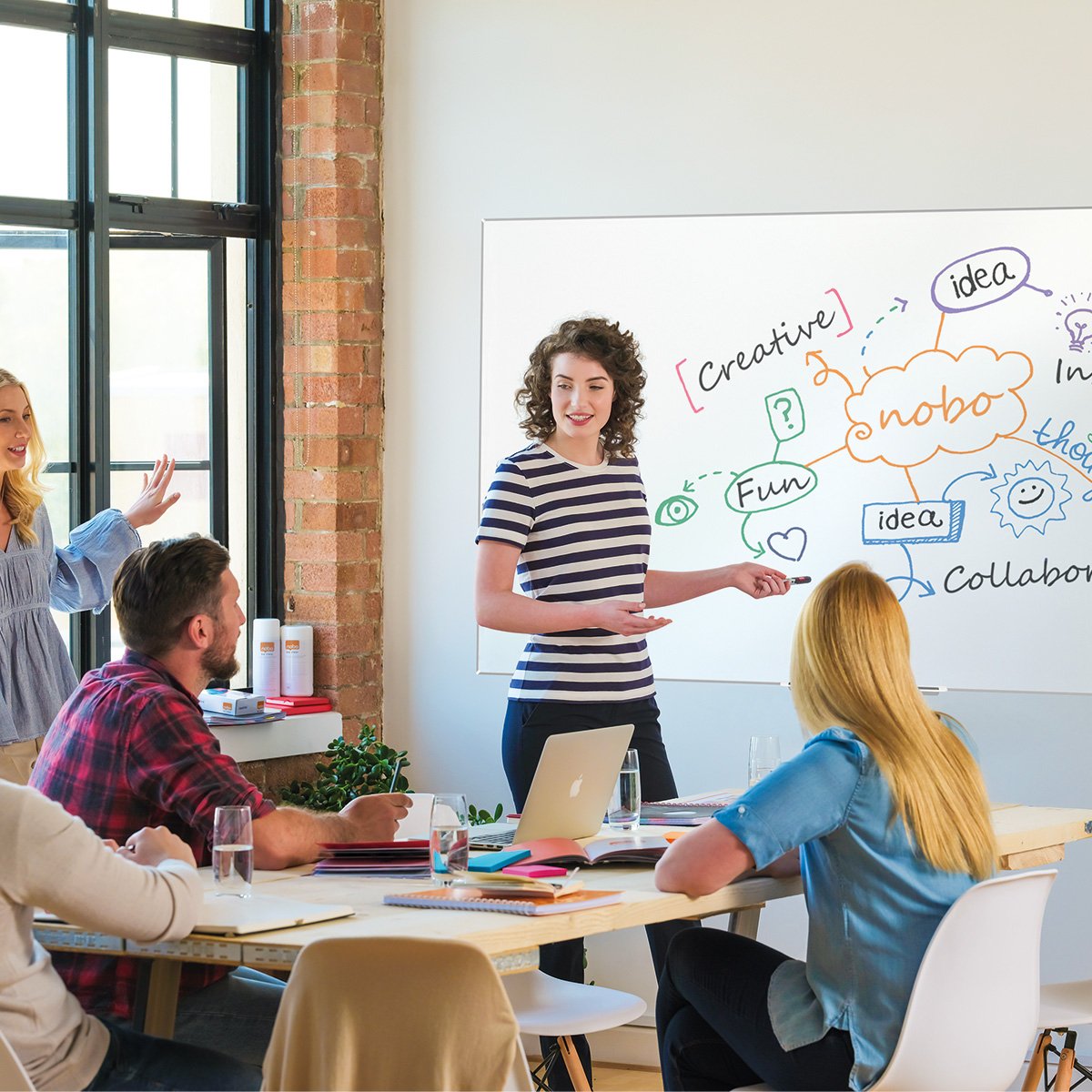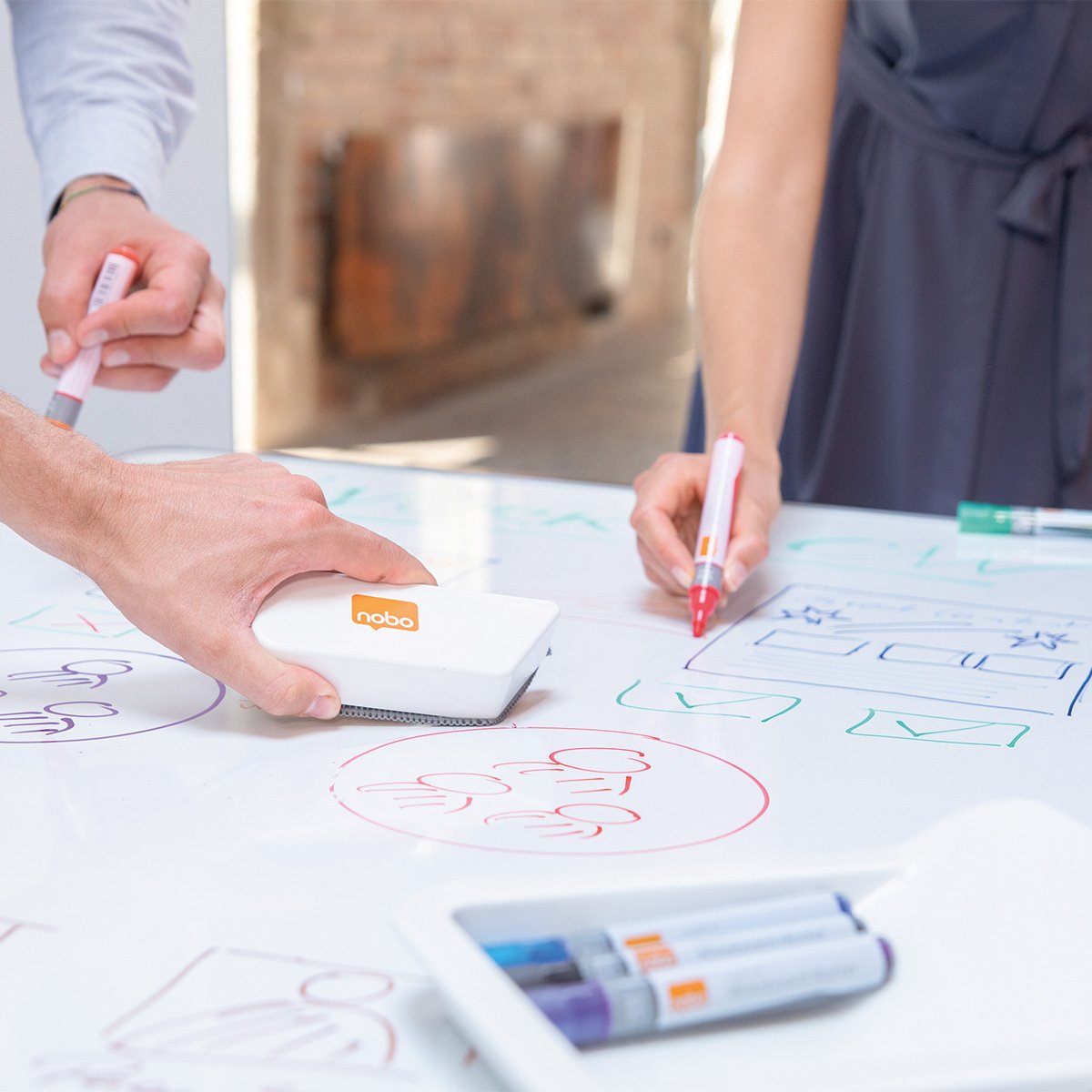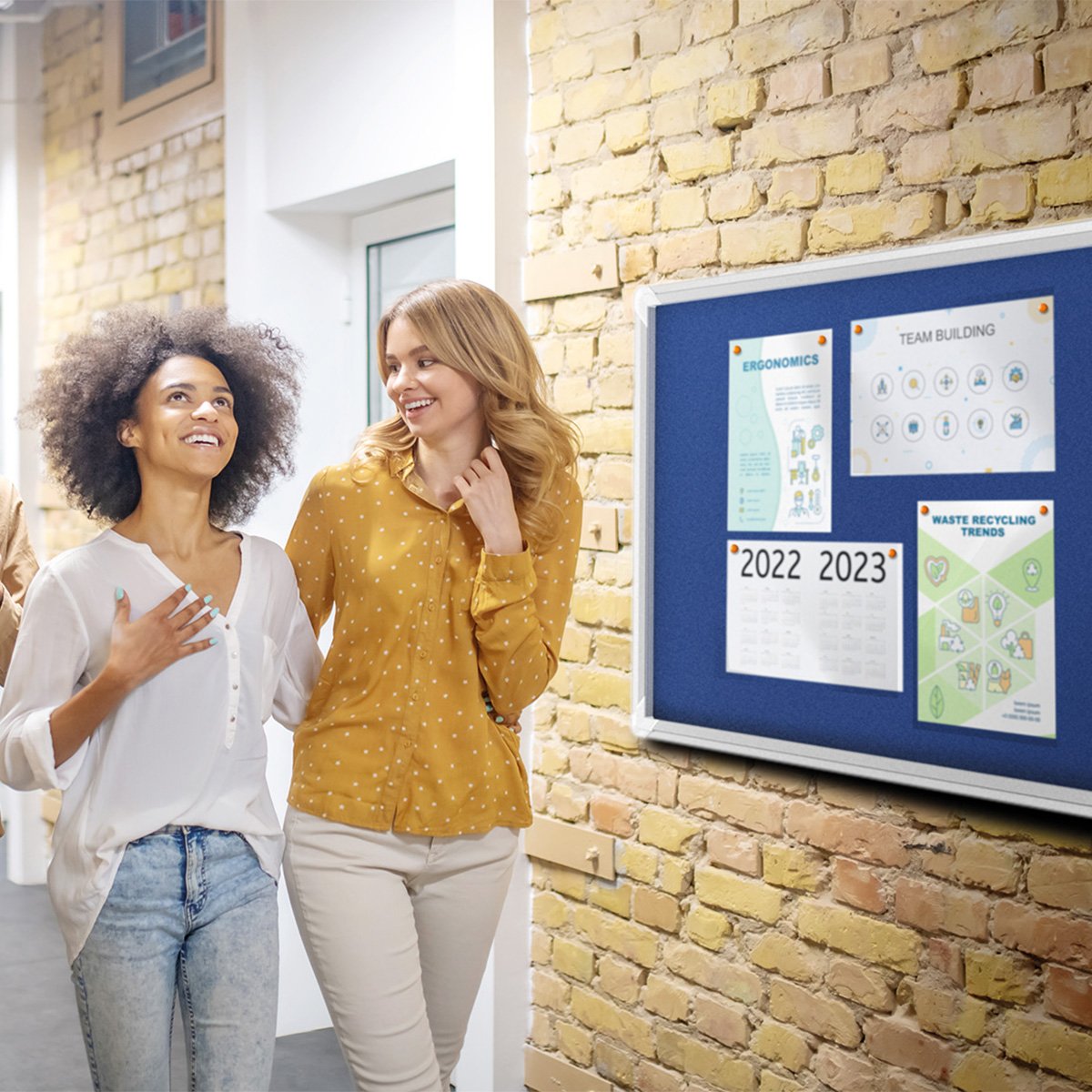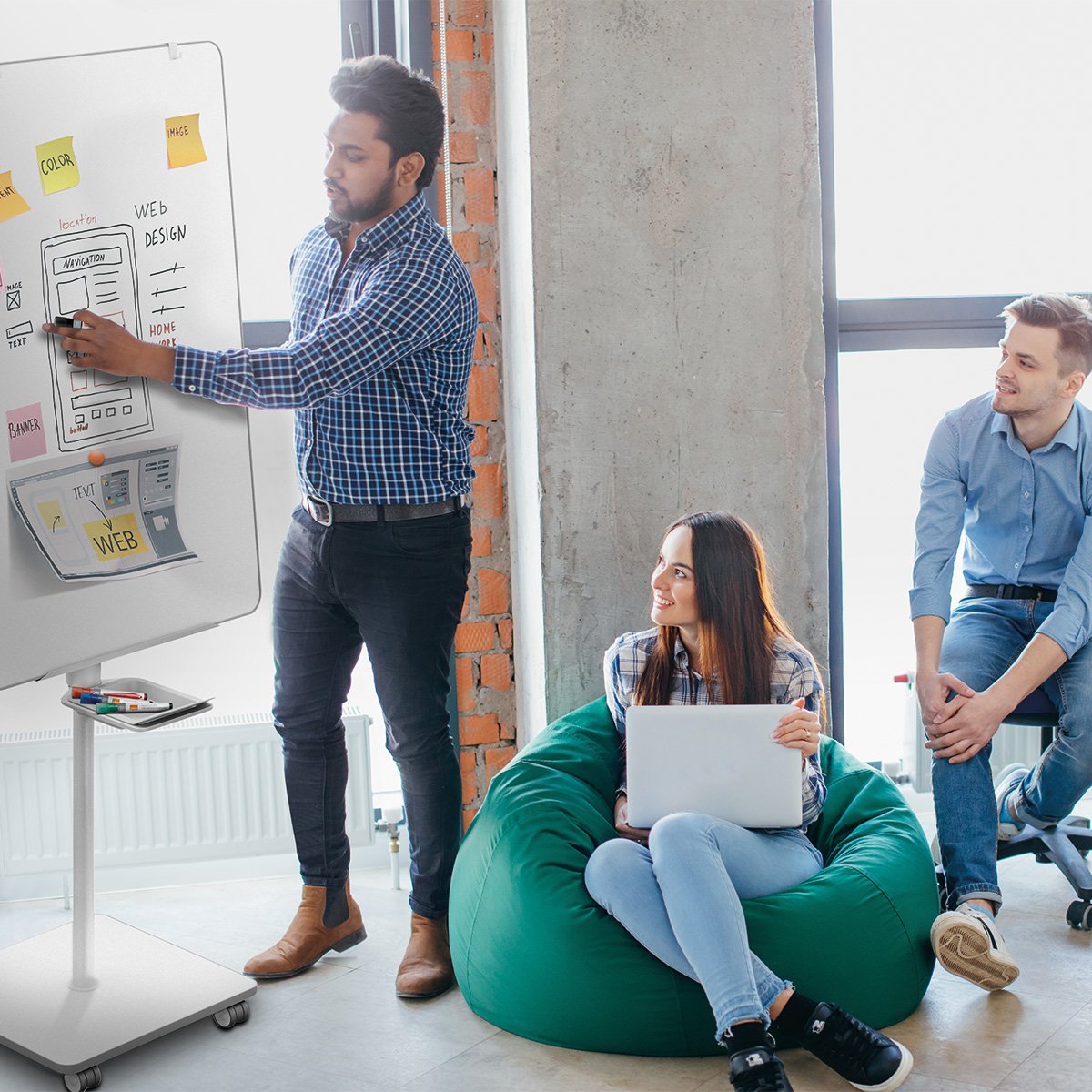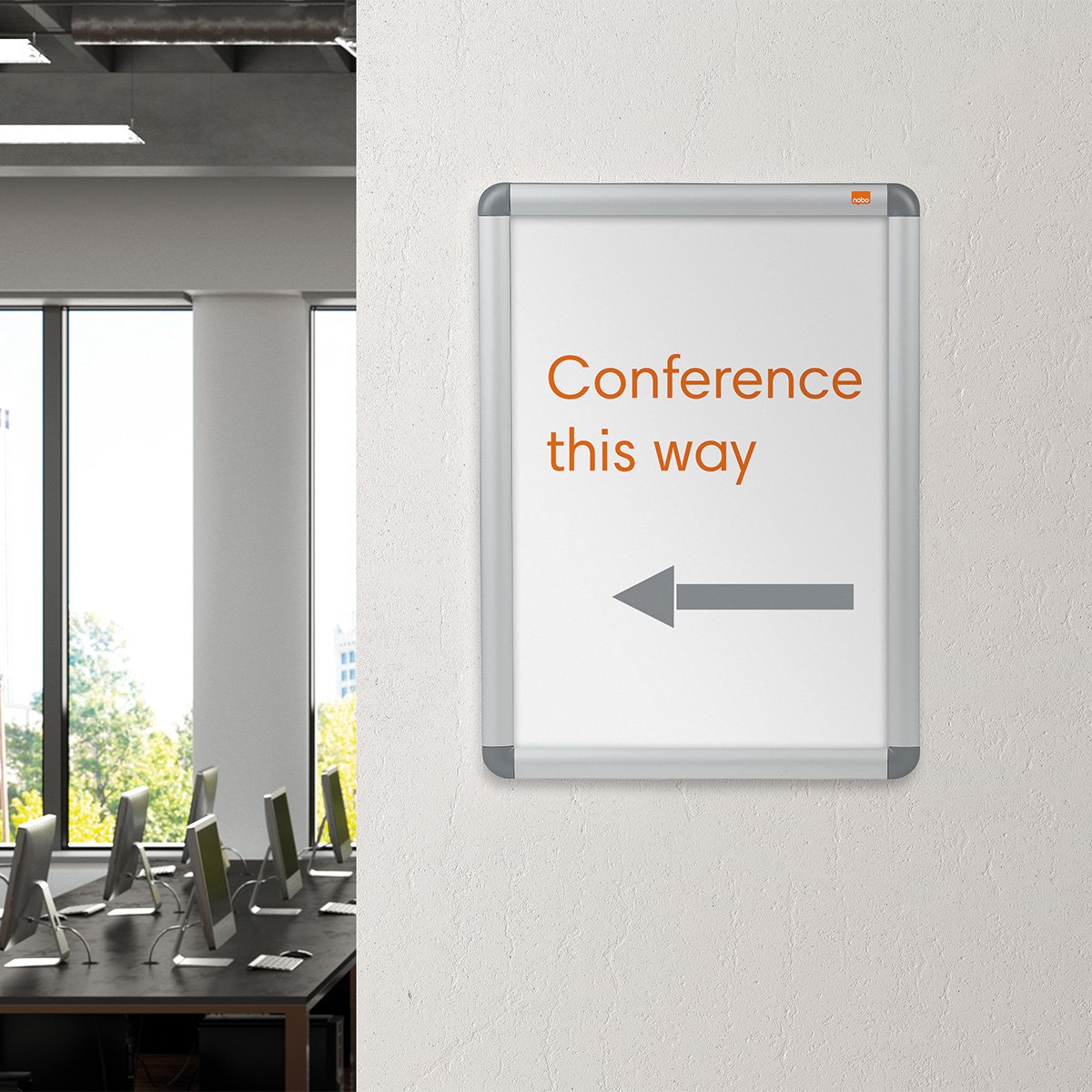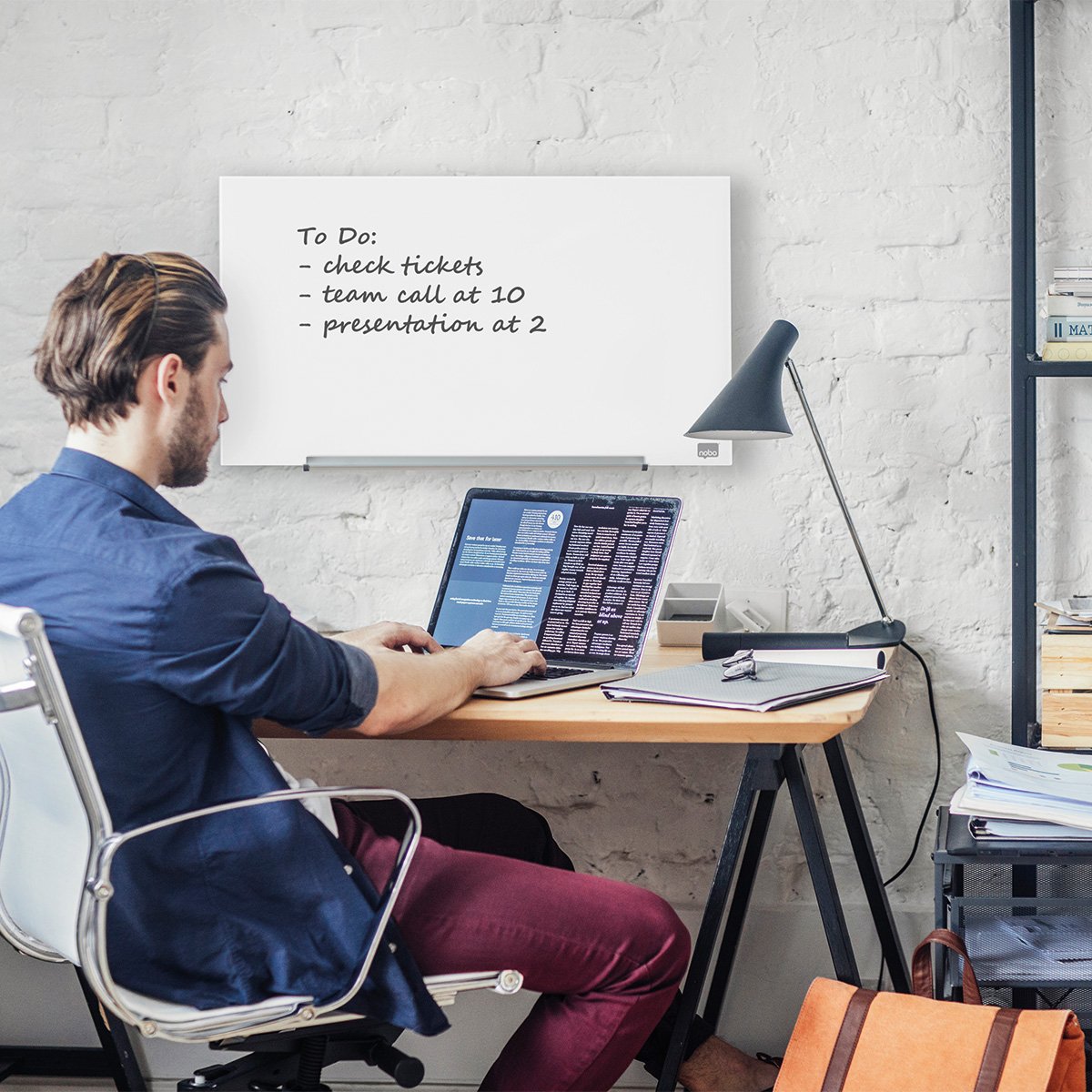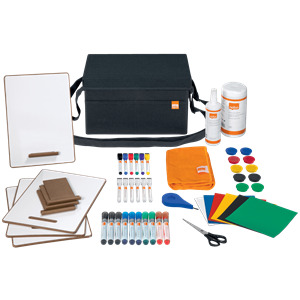How to Make the Most of Your Whiteboard in Meetings
15.10.2024
The ability to communicate clearly in meetings can mean the difference between a productive session and a wasted opportunity. One of the most versatile tools to support your meetings is a whiteboard – not just a blank space, a whiteboard can create an interactive, dynamic space in which to collaborate, resulting in more effective meetings.
However, it’s important that you maximise the potential of this seemingly simple tool. In this guide, we explore some helpful strategies to help you use your whiteboard to its full advantage. From utilising the right accessories to keeping your team engaged, we’ll ensure your whiteboard fosters efficient communicating and successful meeting outcomes.
Why is using a whiteboard in meetings useful?
Whiteboards are an essential meeting tool. They provide a visual space where ideas and suggestions can be recorded, laid out and discussed. They can help meeting participants to better understand information that’s communicated in a meeting, allowing for collaboration and problem solving.
Whiteboards can help to keep information organised throughout a meeting, which can help discussions to stay on topic and relevant. When ideas are written on a whiteboard, it can help participants to stay engaged and focused, even during long meetings.
How to effectively use your whiteboard in meetings
There are a number of factors to consider when using a whiteboard in a meeting, in order to get the most out of this tool.
Use the right whiteboard accessories
To get the most out of your whiteboard, you’ll need more than just a pen or two. As we’ll discuss in the next section, to communicate effectively using your whiteboard, you’ll need a variety of accessories, including:
- Assortment of coloured pens
- Magnets
- Cleaning spray and cloth
For added collaboration and visual communication, you could also utilise grid tape, coloured magnetic squares and mini whiteboards to be used by your meeting attendees.
All of these are included in Nobo’s Whiteboard Accessories Kit Bag, the perfect addition to all your meetings. Our kit bag has been designed to make storing and accessing your whiteboard accessories a breeze, with a magnetic lid to store magnets and elastic loops to hold each pen. The bag is easily transportable, so it’s ideal for storing and organising your accessories as well as taking them to any meeting room, ensuring productive teamwork even when you’re on the go.
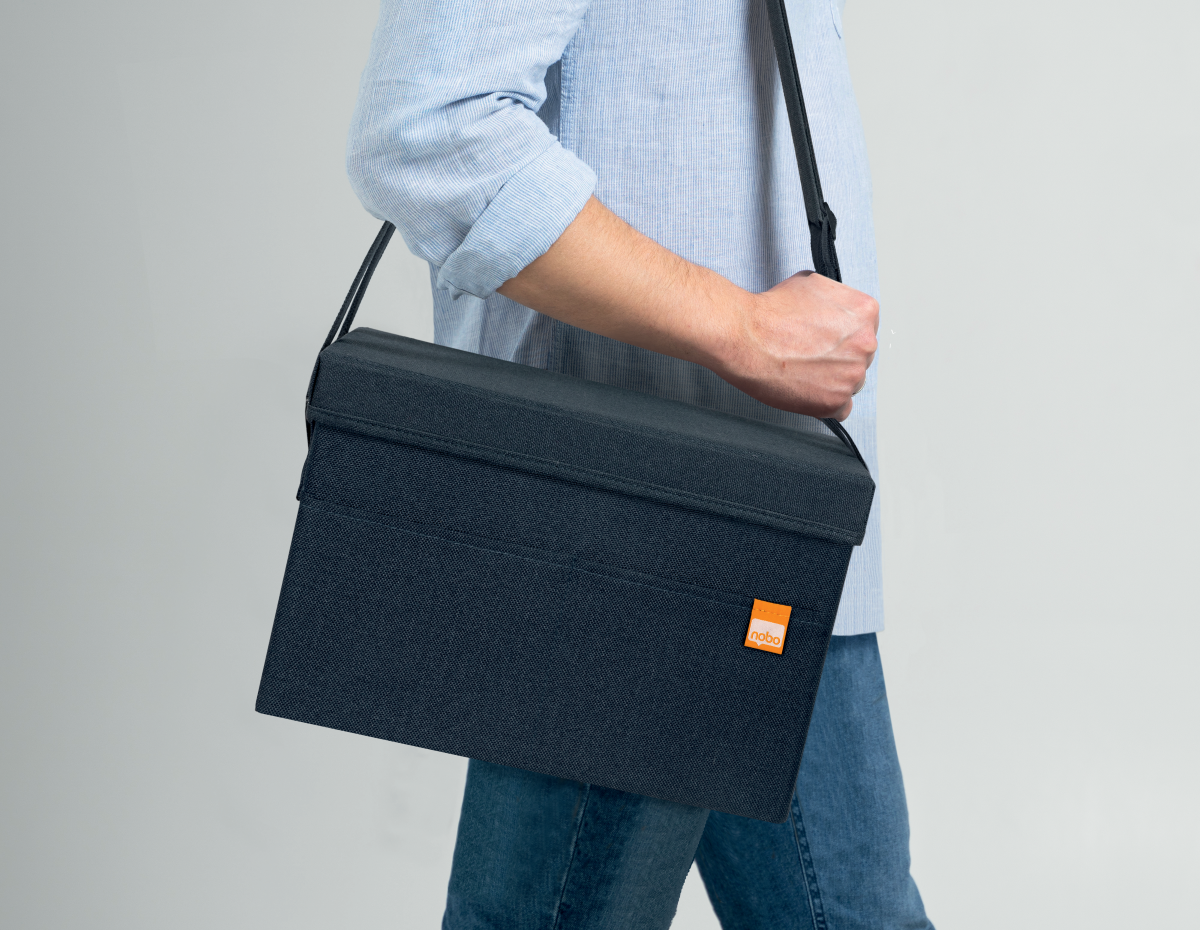
Use effective communication techniques
When writing on your whiteboard, it’s important to keep content clear and concise. In a brainstorming session, this might mean letting the team talk through their ideas first, before you write down the key points. This has the added benefit of letting the team come together to fully understand and summarise each point.
When using visual communication tools like a whiteboard, you should always factor in the visual element. This means using colour coding and sectioning areas to keep ideas organised. For example, you might want to write challenges down in red and solutions down in green, or you could use different colours to indicate different relationships by using different coloured arrows between two points.
You can also fix visual aids and diagrams you might have to your whiteboard, using magnets so you can move things around when you need. This could be helpful if you have a poster or brochure that you’re analysing – simply print out a large version, fix it to your whiteboard, and get annotating.
Encourage interaction and participation
A whiteboard is ideal for encouraging participation in meetings. You can actively involve people by asking them to write their ideas on the whiteboard themselves or add their comments. Not only will this make your meeting more engaging, but it can also help to ensure everyone’s voice is heard.
You can do this with a brainstorming session by writing down the core idea or problem in the centre of the whiteboard and then asking each person to come up and write down their thoughts or suggestions. People will naturally start to build off of each other’s ideas, and you’ll usually find you reach more creative solutions.
For larger meetings, it might not be appropriate to ask everyone to come up and contribute to content on the whiteboard. In this case, you could ask people to breakout into smaller groups and collaborate on their own mini whiteboard. Their ideas and thoughts can then be discussed with the wider group, and key points can be transferred to the main whiteboard for everyone to refer to.
Keep content neat and organised
Whatever you write on the whiteboard will need to be neat and organised, so everyone in the meeting can keep track of what’s been discussed. This will include keeping handwriting neat and large enough for everyone to read, so people remain engaged. You should avoid overcrowding the board, so keep content concise and to the point. You may need to update and revise information as the meeting progresses and more ideas come up and previous suggestions become redundant or irrelevant.
Gridding tape can be an excellent addition to your meeting, as it will help you to create neat charts and tables on your whiteboard. Using a pen could leave things looking messy, but grid tape will result in clean, straight lines. You can then fill in data and points with your pens, remembering to colour code where appropriate.
Document and share whiteboard content
After the meeting, it’s important that all of the information and ideas that were written on the whiteboard are recorded and preserved. This will ensure no solutions or key points are lost and will also help to make next steps actionable.
You could document the whiteboard content either by taking a photograph of it, or by transcribing key points into a more formal document. You can then share the image or document by sending it out in a post-meeting email along with the actions and deadlines, and/or by uploading it to a shared drive. You should ensure everyone has access to the content and is able to follow up on any assigned tasks.
You could also ask participants to feedback on the whiteboard content. It may be that there are adjustments or corrections to make, or additional insights to include sometime after the meeting. If there is more to add, either include it in the document or include an additional document along with the photo of the whiteboard that summarises the extra information.
Conduct successful collaborative meetings with Nobo
Nobo has a huge range of practical communication tools to support your meetings and encourage productive, collaborative work. From whiteboards and notice boards to projection tools and signage, we’re sure to have the solution you need for effective meetings and communication. Take a look at our range of products today to see how we can support your organisation.
